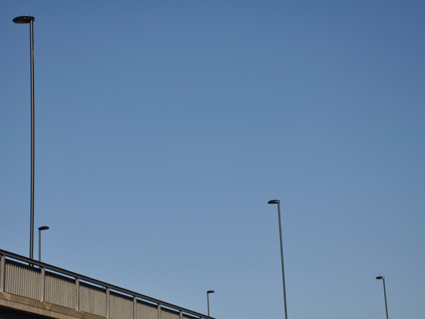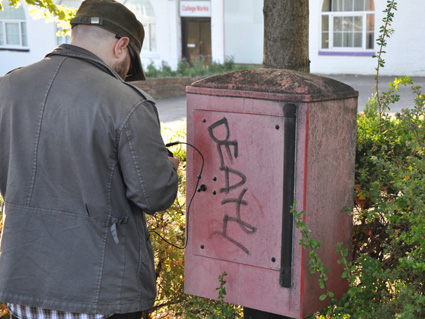|
A series
of two 3-day investigations within complex city-wide spectral ecologies
constructed through subtle interactions between electrical and magnetic
fields (EMF) emitted by all electrical equipment, physical materials,
communication technologies (wireless networks, mobile phone networks,
RFID, television, radio, radar), power lines, biological phenomena,
and geological properties in Newcastle upon Tyne & Dundee, UK. |
|||||||||||
| Led
by Martin Howse |
|||||||||||
| 24,
25 & 26 September 2009 \\ Polytechnic [Newcastle upon Tyne]
|
29,
30 Sept & 1st October 2009 // Mills Observatory [Dundee]
|
||||||||||
| projected
activities |
|||||||||||
| ...
included making sense of a landscape from a forensics perspective,
mapping of event intensity using GPS, reconstruction of unintentional
emissions, TEMPEST, cryptography, EM psychogeographics, data sedimentation,
data visualisation and forging of underground transmission networks. |
...
included physical wave transitions, waveguide antennas, cymatics,
coils and self-made speakers, spark gap transmission, iron ore saturation
and magnetic fields in pottery, wave generation circuits, magnetometers,
electrometers, amateur radio telescopy, geophysical archaeology. |
||||||||||
| materials & tools |
|||||||||||
laptops,
GPS, wireless cards, access points, communications technologies,
radio's, large tins and juice cartons. |
fruit, vegetables, wire, tins, broken or functioning radios, cardboard, foil, magnets, minerals) for wave-length explorations.
|
||||||||||
Martin
Howse is an artist, programmer,
theorist and film- maker. Martin gained a Fine Art BA degree at
Goldsmiths College, London. Martin has performed and collaborated
worldwide using custom, open software and hardware modules for data/code
processing and generation. In 2005, Martin was part of a team awarded
first prize in the VIDA 8.0 art and artificial life competition.
In 2006 he initiated xxxxx as a research centre in Berlin, Germany,
producing the acclaimed xxxxx [reader] and maintaining a series
of workshops. Martin also writes regularly for GNU/Linux/free software
publications and has participated in related conferences and workshops.
The Independent xxxxx research organisation examines the software
real, life and live coding, autodestructive strategy and crash-falsified
revelation. |
|||||||||||
|
|||||||||||









